I'm going to just slap a bunch of images in here from the past few weeks 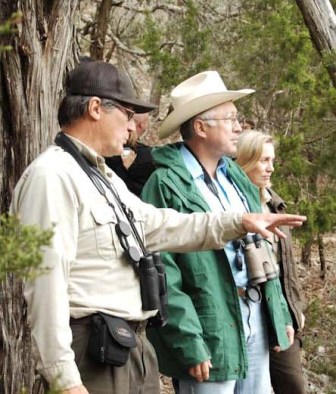 with some brief remarks about each set. These will include, in no particular order: (a) Interior Secretary Ken Salazar, (b) photos of the early 2009 prescribed burn on the Rodgers tract and recent pictures of its recovery (pretty wildflowers, etc.), (c) some recent scenes from Post Oak Creek (sunrise, swimming hole, etc.), (d) images of a recent Hutton's Vireo detected on the Beard tract in late March, and (e) a menagerie of recent critters, many of which--particularly the collection of moths--were photographed at the porch light at nights at the Beard cabin.
with some brief remarks about each set. These will include, in no particular order: (a) Interior Secretary Ken Salazar, (b) photos of the early 2009 prescribed burn on the Rodgers tract and recent pictures of its recovery (pretty wildflowers, etc.), (c) some recent scenes from Post Oak Creek (sunrise, swimming hole, etc.), (d) images of a recent Hutton's Vireo detected on the Beard tract in late March, and (e) a menagerie of recent critters, many of which--particularly the collection of moths--were photographed at the porch light at nights at the Beard cabin.
Just to prove I wasn't telling tall tails about the visit from a dignitary from Washington, D.C., here is proof of Secretary Salazar's visit. We took a 45-minute walk in the late afternoon of March 11 along the Cactus Rocks Trail. Frequent trail users will recognize the tilted (broken) juniper limb over our heads (at marker #9).
In 2008, we began the heavy-handed process of restoring some shinnery habitat for the Black-capped Vireo on several tracts. This initially involves crushing the scrubby 2nd-growth cedar and the standing shin oak, then running a prescribed burn through the resulting heavy slash. This kind of fuel load can produce a VERY hot fire--don't try this at home--but we have learned that this is precisely was is necessary initially to start habitat on the best trajectory for the vireos. Here's what a prescribed burn on the Rodgers East Plateau and its aftermath looked like in January 2009:
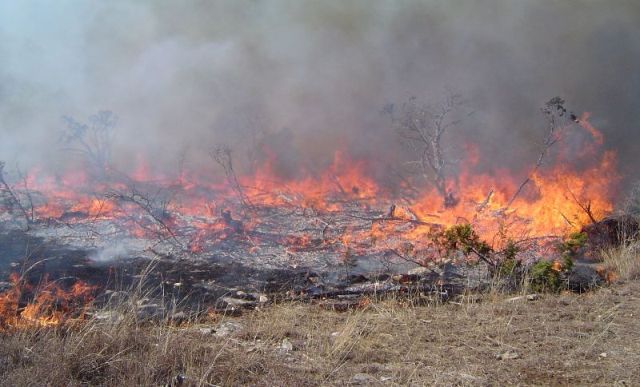
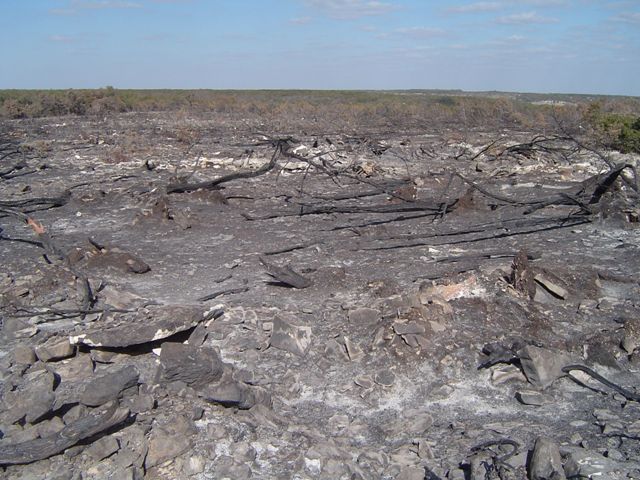
The response of a Hill Country landscape even after a very hot burn like this is nothing short of miraculous. All of the native perennial grasses and shrubs, as well as native trees such as oaks (3 species), Texas ash, cherry, and cedar elm have regrown vigorously in 2009 (a severe drought year) and the beginning of the current growing season. The robustness of many of our native wildflowers is stunning on the new open ground:


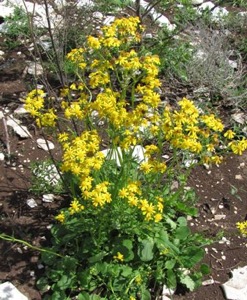


Here are some recent shots in the Post Oak Creek watershed. A sunrise, a new-found swimming hole--er, I mean, natural pool, and a tenacious old juniper that refuses to let go of it's cliffside perch:
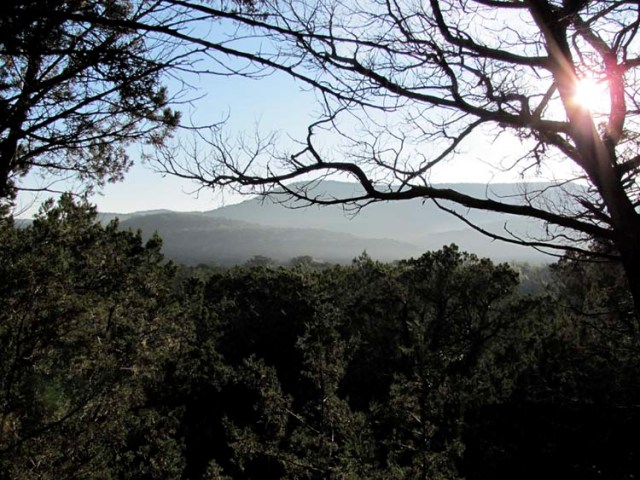

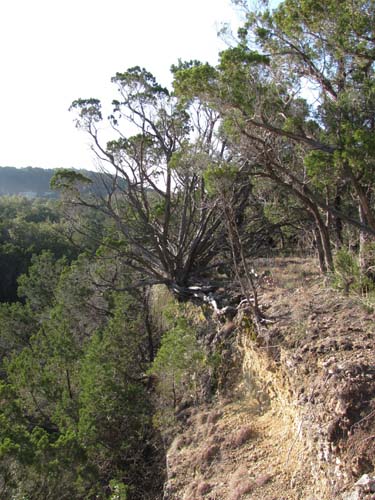
When I encountered the Hutton's Vireo on our Christmas Bird Count
last
December, I was happy to have added another record of this rare vagrant
to our avian database. Then on March 25, remarkably, I heard another Hutton's
Vireo singing on the Beard tract--eight miles away from where the
December bird had been detected. Was this the same individual or
another? We'll never know. But this one was for certain a male; he was
vigorously "singing"--and I use the term loosely when it comes to this
species. I managed to get better photos this time and also used the
"movie" function of my point-and-shoot camera to actually get some good
recordings of several different songs of his. He hung around at least a
few days; I heard him singing again on March 27 in the same area. Here
are two cropped pictures from the 25th.


With the good macro capabilities of my little camera, I have the opportunity to get very identifiable photographs of many insects. Actually
identifying all the critters takes longer, so right now I'm just pointing and shooting at everything. The identities will come later. Here is a typical menagerie which can show up at the porch light on the Beard tract, followed by a gallery of various creatures. I've put tentative names on some of the moths; hover your mouse over an image to see my notes.
